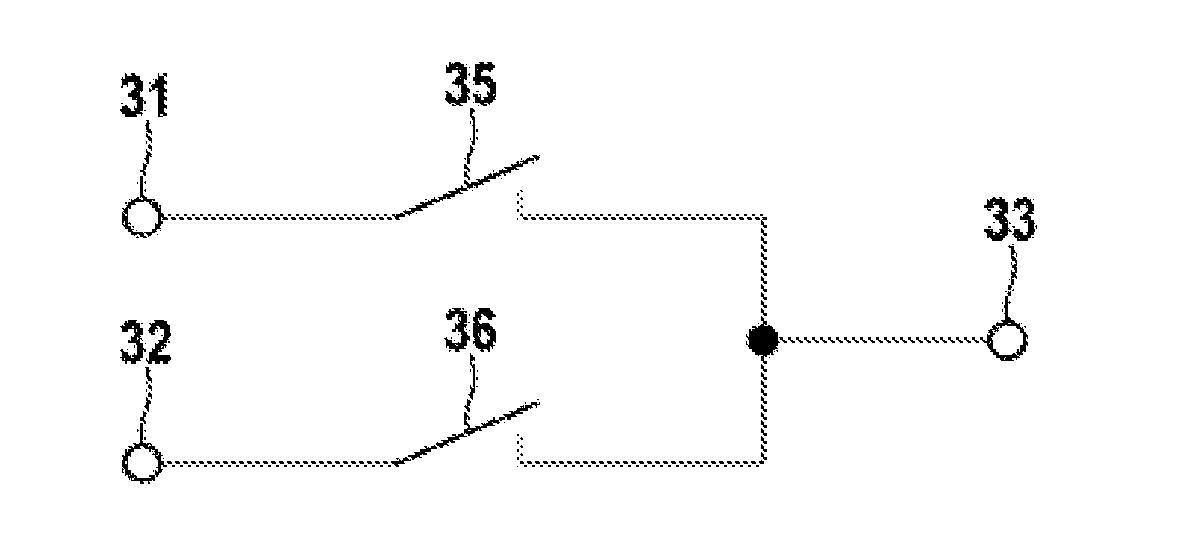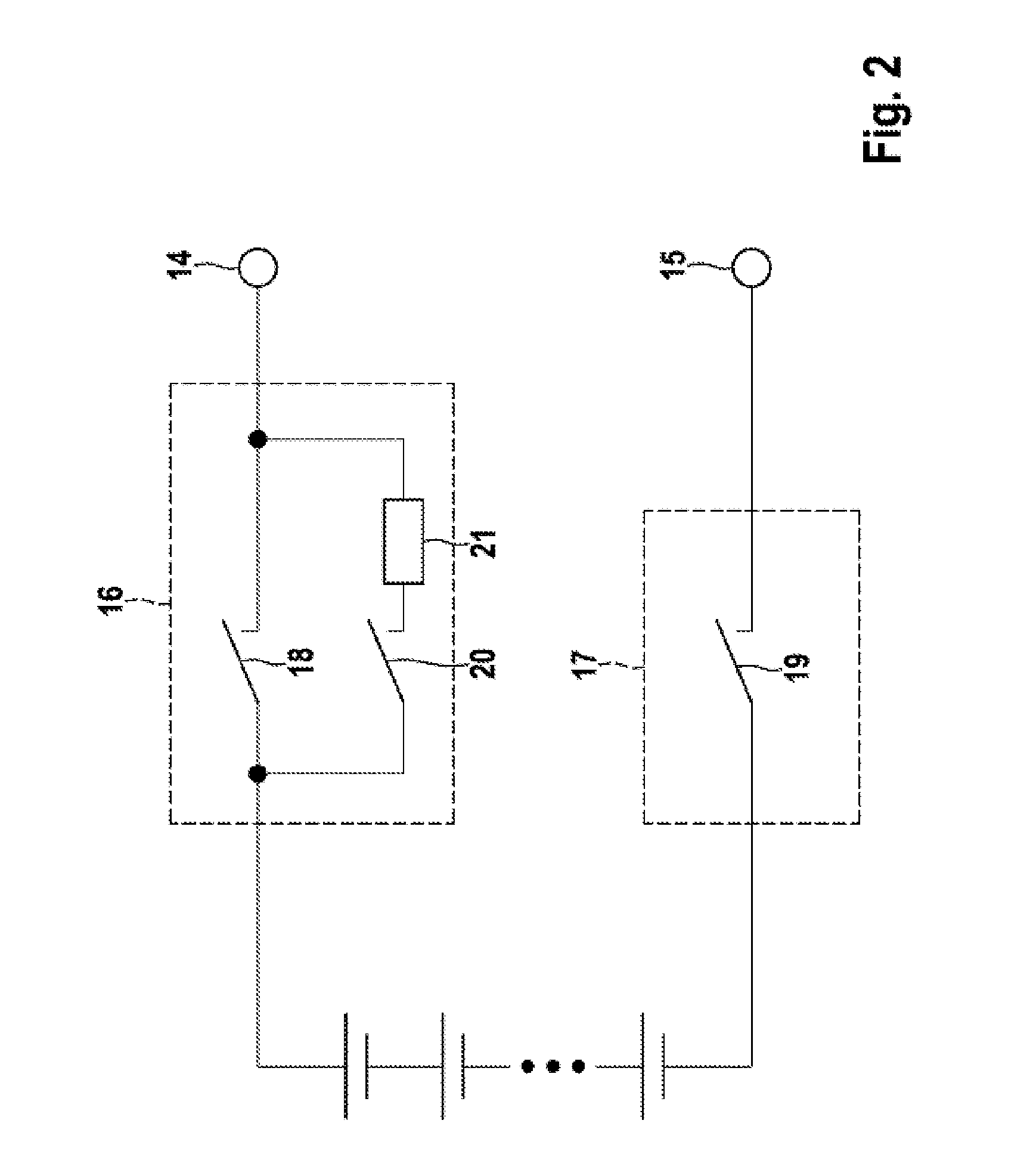Coupling Unit and Battery Module having an Integrated Pulse-Controlled Inverter and Increased Reliability
a technology of pulse-controlled inverters and coupling units, which is applied in the direction of battery arrangements, electrical devices, safety/protection circuits, etc., can solve the problems of high capacitance, high cost and space requirements, and considerable potential for servicing personnel or the like being injured, so as to increase the service life of the battery. , the effect of reducing the exten
- Summary
- Abstract
- Description
- Claims
- Application Information
AI Technical Summary
Benefits of technology
Problems solved by technology
Method used
Image
Examples
first embodiment
[0026]FIG. 4 shows the coupling unit which has a changeover switch 34, which can in principle connect only one of the two inputs 31, 32 to the output 33, while the respective other input 31, 32 is decoupled from the output 33. The changeover switch 34 can be realized as electromechanical switches in a particularly simple manner.
second embodiment
[0027]FIG. 5 shows the coupling unit in which a first and a second switch 35 and 36, respectively, are provided. Each of the switches is connected between one of the inputs 31 and 32, respectively, and the output 33. In contrast to the embodiment of FIG. 4, this embodiment provides the advantage that both inputs 31, 32 can also be decoupled from the output 33 so that the output 33 has a high impedance. In addition, the switches 35, 36 can be implemented in a simple manner as semiconductor switches, for example MOSFETs or IGBTs. Semiconductor switches have the advantage of a favorable price and a high switching speed, and therefore the coupling unit 30 can react to a control signal or a change in the control signal within a short time and high changeover rates can be achieved.
[0028]FIGS. 6A and 6B show two embodiments of the battery module 40 according to the invention. A plurality of battery cells 41 is connected in series between the inputs of a coupling unit 30. However, the inven...
PUM
| Property | Measurement | Unit |
|---|---|---|
| voltage | aaaaa | aaaaa |
| time | aaaaa | aaaaa |
| voltage | aaaaa | aaaaa |
Abstract
Description
Claims
Application Information
 Login to View More
Login to View More - R&D
- Intellectual Property
- Life Sciences
- Materials
- Tech Scout
- Unparalleled Data Quality
- Higher Quality Content
- 60% Fewer Hallucinations
Browse by: Latest US Patents, China's latest patents, Technical Efficacy Thesaurus, Application Domain, Technology Topic, Popular Technical Reports.
© 2025 PatSnap. All rights reserved.Legal|Privacy policy|Modern Slavery Act Transparency Statement|Sitemap|About US| Contact US: help@patsnap.com



